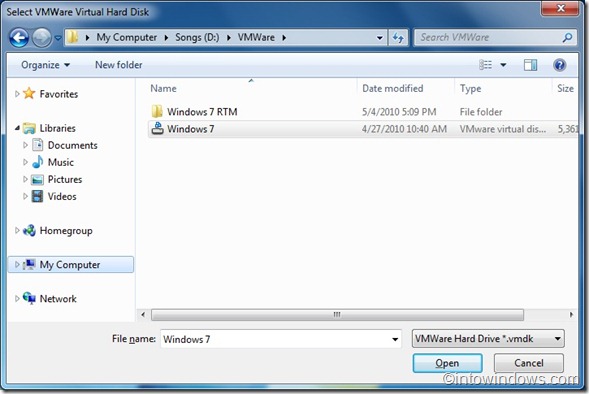

- VMDK TO DMG HOW TO
- VMDK TO DMG SERIAL NUMBER
- VMDK TO DMG UPDATE
- VMDK TO DMG DOWNLOAD
- VMDK TO DMG FREE
Converting but also a verifying consistency of those images.
VMDK TO DMG FREE
QEMU disk image utility for Windows is a free utility for Windows users allowing to convert different types of virtual disk formats.
VMDK TO DMG DOWNLOAD
VMDK TO DMG SERIAL NUMBER
Specifically the following:Ġ3.) Change "virtualMachineHardwareType" from "MacBookPro14,2" to whatever Macintosh Hardware Type your physical hardware might beĠ4.) Change "virtualMachineSerialNumber" from "random" to the same serial number as the physical hardware in your possessionĠ7.) You now have a VMDK file that will masquerade as a DEP enabled device. So you need a VM to test DEP? No problem!Ġ1.) Grab your nearest DEP enrolled Mac that's still in a box (or wherever) - just so long as it's not currently enrolled in JamfĠ2.) Edit the "environmentSettings" sub-routine within the script. Perfect for testing in your Jamf Dev environment, handing out to engineers and developers, or whatever needs you may have. When it's all done, you will have a never before booted VMDK (Vmware Fusion Compatible Virtual Machine).īecause each VMDK file has a date and time stamp appended to the file name and the serial number's are randomized, you can create an entire fleet of Jamf Compatible macOS 10.13+ Virtual Machines.
VMDK TO DMG UPDATE
This process takes awhile.ġ0.) When everything is done, you will have a shiny, new file named something similar to "osx_updated_180820-10.13." in your JamfCompatibleVM folderġ1.) Update the createVMDK.sh script with the name of this file.ĬREATING A JAMF COMPATIBLE macOS 10.13+ VIRTUAL MACHINE
VMDK TO DMG HOW TO
Once you've gathered everything you need, here's how to get things set up so you can be productive.Ġ1.) Create a folder on your Desktop called "JamfCompatibleVM"Ġ2.) Copy/Move the vfuse.pkg into the JamfCompatibleVM folderĠ3.) Copy/Move the aforementioned script into the JamfCompatibleVM folderĠ4.) Double-Click the AutoDMG.dmg that you downloaded and copy AutoDMG.app into /ApplicationsĠ6.) Drag your copy of Install macOS High Sierra.app into AutoDMG.appĠ8.) Save the AutoDMG output file to the JamfCompatibleVM folderĠ9.) Go get a beverage. Here's how you can do that.Ġ1.) Copy & Paste from this page into your favorite plain text editorĠ1A.) You will need to update the macOS DMG and vfuse variables accordingly.Ġ2.) Save as "createVMDK.sh" - make sure you save in plain text formatĠ3.) Launch /Applications/Utilities/Terminal.appĠ4.) Navigate to the folder where you saved the createVMDK.sh scriptĠ5.) Type in the following: chmod 755 createVMDK.shĠ6.) Press enter - this will make the script executable You're going to need a copy of the script. VfusePKG=vfuse-2.0.6.pkg # vfuse PKG installer VirtualMachineSerialNumber="random" # "random" creates a random serial number, otherwise type in your own (needed for DEP testing)īootableDMG=osx_updated_180820-10.13. # Bootable macOS DMG as created by AutoDMG VirtualMachineHardwareType="MacBookPro14,2" # Apple Macintosh hardware type VirtualMachineName="Jamf_Compatible_Virtual_Machine" # Name of Virtual Machine as known to Vmware Fusion # Added vfuseCheck with installer routine # for use with a Mobile Device Management platform (ie Jamf). # Creates custom vmdk file with a serial number and Apple hardware type So here's what you're going to need (you should start downloading now). What I'm about to present to you isn't exactly groundbreaking, but it IS handy. I've read many posts and blogs on how to build Jamf Compatible macOS 10.13+ Virtual Machines.Īfter much reading, I cobbled together a script that soon became a workflow and has since become a mainstay in my toolkit.īefore I continue, here are three sites from which I pieced together my workflow:


 0 kommentar(er)
0 kommentar(er)
